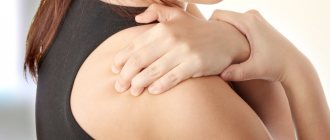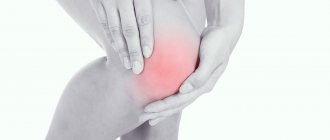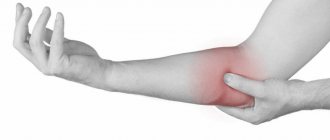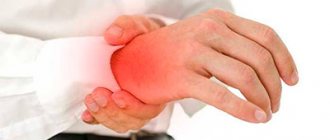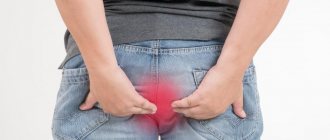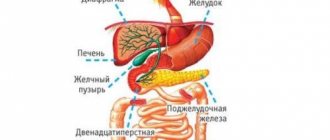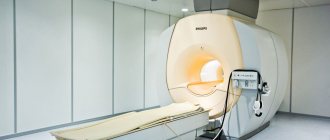Pain in the shoulder girdle can occur regardless of age. Such unpleasant symptoms can be short-term or permanent. Pain syndrome is often a consequence of excessive overload of the shoulder joint. Also, such a symptom may indicate the development of serious pathological processes. If unpleasant clinical manifestations occur, it is very important to visit a specialist as early as possible to establish the causes of pain and begin treatment. Often the cause of shoulder pain is arthrosis. You can undergo comprehensive treatment for arthrosis of the shoulder joint at ArthroMedCenter.
Causes of pain
The shoulder joint is one of the most mobile in the human body. The shape of the head of the humerus is spherical. It is attached by tight joints, tendons and ligaments. This ensures motor function. Various factors can provoke the appearance of painful manifestations. To accurately determine the cause of the pain syndrome, you need to contact a doctor in time, who will prescribe the appropriate examinations and the correct therapy.
Unpleasant symptoms in the damaged area can be caused by the following reasons:
- physical inactivity – leading a sedentary lifestyle;
- presence of overweight or obesity;
- high loads on the joints, for example, when carrying or lifting heavy objects, playing professional sports, if the work involves constant vibrations;
- the presence of postural abnormalities, abnormal structure of the spinal column - kyphosis, lordosis, scoliosis;
- previous injuries - bruises, dislocations, fractures, as well as previous surgical interventions;
- age category - in people after 50 years, there is a significant deterioration in tissue regeneration, and the destruction of cartilage structures begins. In this case, the joints rub against each other, gradually begin to thin out and collapse;
- pathological processes of infectious type;
- autoimmune diseases;
- disruptions in metabolic processes;
- disturbances or changes in hormonal levels, for example, during menopause or pregnancy;
- genetic predisposition to diseases of the musculoskeletal system.
Diagnostics
To determine the reasons why the arm does not rise up, various diagnostic methods are used. Diagnosis begins with examination of the patient, palpation of the painful area and collection of anamnesis. Based on the data obtained about the nature of the pain, clinical picture, lifestyle and concomitant diseases of the patient, the doctor makes a preliminary diagnosis. During further examinations, this diagnosis is clarified or refuted. The full range of diagnostic measures includes:
- Laboratory diagnostics - blood tests (biochemical, general, C-reactive protein). With their help, it is possible to identify the presence of inflammation, autoimmune reactions, and metabolic disorders.
- X-ray, which gives an idea of the condition of bones and cartilage. The degree of cartilage wear is assessed by the size of the gaps between the heads of the mating bones.
- Ultrasound is an ultrasound examination that allows you to identify excess synovial fluid in the joint cavity, foci of inflammatory processes, neoplasms and abscesses.
- Computed tomography (CT), which allows you to assess the condition of cartilage and bone tissue in osteoarthritis, osteochondrosis, injuries of bones and joints.
- MRI is magnetic resonance imaging, which makes it possible to visualize the condition of osseous, cartilage and soft tissues by layer-by-layer scanning.
- Puncture of the shoulder joint to take synovial fluid for analysis.
- Arthroscopy, which involves introducing a miniature video camera into the joint cavity through a tiny incision.
The use of these methods provides comprehensive information about the reasons why the shoulder hurts when raising the arm. Depending on the identified diseases, the patient is treated by specialized specialists: traumatologists, orthopedists, rheumatologists, neurologists.
Possible diseases
Various diseases can provoke the appearance of painful manifestations. Let's take a closer look at the symptoms and causes of various diseases of the shoulder joint.
Arthritis
It is one of the most common provoking factors for the appearance of painful sensations. The development of this disease is caused by an inflammatory focus in the joint cavity. When arthritis appears, a person feels severe pain, swelling and swelling of the tissues in the damaged joint, and redness of the skin.
The main causes of this disease are:
- various injuries;
- infectious diseases;
- allergic and autoimmune diseases.
There is an acute and chronic form of the disease, the intensity of the clinical picture depends on this.
Bursitis
This is an inflammatory disease, it is accompanied by the accumulation of fluid in the cavity of the joint capsule. The most common cause of bursitis is trauma. The development of the pathological process is accompanied by intense pain, regardless of whether the person moves the shoulder or not. Supplemented by local or general hyperthermia, severe edema and swelling. During palpation, fluid is felt moving inside the joint.
Capsulitis
The disease is characterized by a chronic inflammatory process in the capsule, which surrounds the joint and serves to stabilize it. With a prolonged inflammatory process, the capsule contracts and the ligaments around it atrophy. Soreness appears at night, symptoms occur in waves. When the active inflammatory process subsides, shoulder movement becomes limited.
Humeroscapular periarthritis
The disease is accompanied by a pronounced inflammatory process, which affects the tissues located around the shoulder joint. During movement, the pain becomes much more intense. It becomes difficult for a person to lift a limb, rotate it, or place it behind the back.
Tendinitis
The disease is characterized by inflammation of the tendons. Develops under the influence of significant physical activity of the limb. Depending on how severe the inflammatory process is, the intensity of the pain will depend.
Osteochondrosis of the cervical-collar area
The pathological process is associated with flattening of the discs that are located between the vertebrae. Nerve endings are pinched. The severity of the pain syndrome is determined by the degree of development of the disease. The pain intensifies when turning and tilting the head. Additionally, the hands become numb and lumbago appears. The pain moves to other parts of the body.
Ligamentous calcification
The disease is accompanied by the accumulation of particles of calcium salts in the ligamentous apparatus. Currently, there is no exact cause for this pathological process. Painful sensations are pronounced, regardless of whether the person moves his arm or not.
Brachial neuritis
The brachial nerves or nerve plexuses in this area are affected as a result of injuries, hypothermia, and infectious processes. Painful sensations spread not only to the shoulder joint, but also to the entire limb. In addition to pain, there is numbness, burning, and a feeling of pins and needles on the arm. If the disease is in an advanced stage, certain groups in the muscular system may become paralyzed.
Diseases of internal organs
Sometimes there is pain that radiates to the shoulder. This is associated with diseases of the internal organs. The most dangerous is myocardial infarction. It is accompanied by the appearance of squeezing pain or a burning sensation in the chest area, between the shoulder blades. The pain may spread to the neck and face.
The development of the pathological process is complemented by the following symptoms:
- weakness;
- increased sweating;
- attacks of dizziness;
- compression in the chest;
- feeling of panic.
This pathology is life-threatening. Sometimes pain in the shoulder joint appears against the background of exacerbation of chronic pancreatitis.
Injuries and damage
Injuries are accompanied by acute pain. Additionally, joint mobility is limited. As the disease progresses, joint deformation develops. Bruises and crunching appear.
It is very important to carry out the correct diagnosis in time, which will help establish the diagnosis, after which the doctor will prescribe the appropriate treatment.
Pain in bones, muscles, joints and forearm
Pain in the left shoulder joint and forearm often occurs with diseases of the heart, liver, spine, after a stroke, heart attack, with hepatitis, pneumonia, cervical osteochondrosis, tumors of tissues and organs of the chest, and with other diseases. Pain may indicate dysfunction of the bones, pathological changes in the tendons:
- The elbow is pressed to the side, the arm turns outwards with the inner side - severe pain indicates a pathological process in the infraspinal tendon.
- Severe pain in the left shoulder joint and forearm when moving the upper limb to the side or forward indicates damage to the supraspinal tendon.
- The elbow is pressed to the side, the arm is turned with the outer side towards the body. Pain in the shoulder with this position of the arm indicates a pathological process in the subscapularis tendon.
Arthrosis of the shoulder joint
Arthrosis is a degenerative pathological process of a chronic type. Accompanied by deformation, destruction and elimination of cartilage tissue. Against the background of such processes, sections of bones begin to rub against each other, come into close contact, and their destruction begins.
With constant friction, painful sensations arise, they become more pronounced as the pathological process develops. In parallel, osteophytes are formed, joints and bones undergo deformation. The motor function of the joint is lost and becomes limited. In the advanced stage of the disease, a person completely loses the ability to move his shoulder.
In the first stages of development, crunching and clicking appears, and an area of compaction and discomfort occurs. After this, discomfort and severe pain occur. To make a correct diagnosis, you must consult a doctor in a timely manner.
Principles of treatment
Treatment involves the use of conservative therapy and physiotherapy. If conservative treatment does not bring the desired results, surgical intervention is prescribed.
Medications are used to relieve pain and stop the inflammatory process, and restore cartilage tissue.
Effective methods for treating shoulder pain are:
- magnetic therapy;
- phonophoresis;
- electrophoresis;
- UHF;
- manual therapy;
- acupuncture;
- massage;
- therapeutic exercises;
- kinesiotherapy;
- balneology;
- ozokerite;
- cryotherapy.
Treatment of arthrosis of the shoulder joint at ArthroMedCenter
The ArthroMedCenter in Moscow uses the following methods for treating symptoms of arthrosis of the shoulder joint:
- Hivamat therapy. A massage is performed using a special electric field. It represents a slight vibration. Thanks to this procedure, damaged tissues are restored and swelling goes away. This technique copes well with pain symptoms.
- Electrophoresis. Thanks to this procedure, medications penetrate as deeply as possible into the tissues and act more effectively on the affected area.
- SMT therapy. This technique improves blood circulation, triggers recovery processes and relieves severe pain.
With the help of a correctly established diagnosis and competently prescribed treatment, you can get rid of pain in the shoulder joint. To stop the inflammatory process, conservative treatment and physiotherapy are used.
Reasons to see a doctor
Pain in the shoulder joint is a good reason to see a doctor, because, as stated above, it accompanies many dangerous diseases. The following symptoms require special attention:
- Injuries. If pain in the shoulder joints occurs after an unsuccessful movement or heavy physical activity, then there is a high probability of receiving a serious injury, which can leave consequences. Particularly dangerous are fractures, sprains and ruptures of ligaments, dislocations, and loss of a joint from the joint capsule.
- Temperature. Inflammatory and infectious reactions can lead to an increase in temperature, both throughout the body and in the shoulder area. Redness, rash, irritation, and swelling are also possible.
- Ineffectiveness of painkillers. If classic painkillers do not help eliminate pain in the shoulder joint, it is possible that the disease concerns the internal organs and does not relate to the shoulder area.
- Prolonged pain. If sudden pain in the right or left shoulder does not go away for a long time, then you need to consult a specialist for diagnosis and treatment of the hands.
If you have pain in the right or left shoulder, it is recommended to contact an osteopathic specialist as soon as possible, who can diagnose the disorder, relieve pain and cure the root cause of the disease, rather than fight the symptoms.
